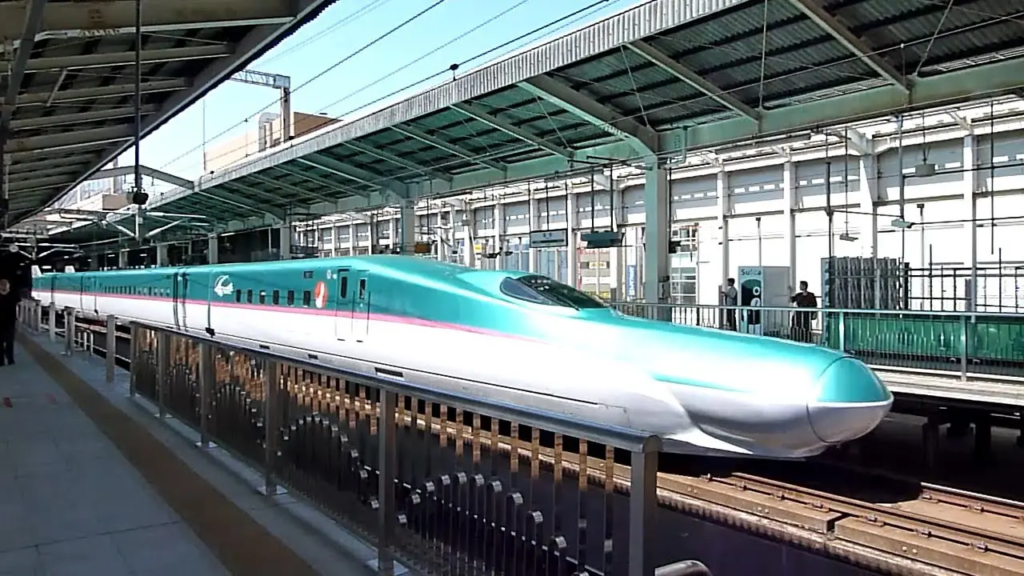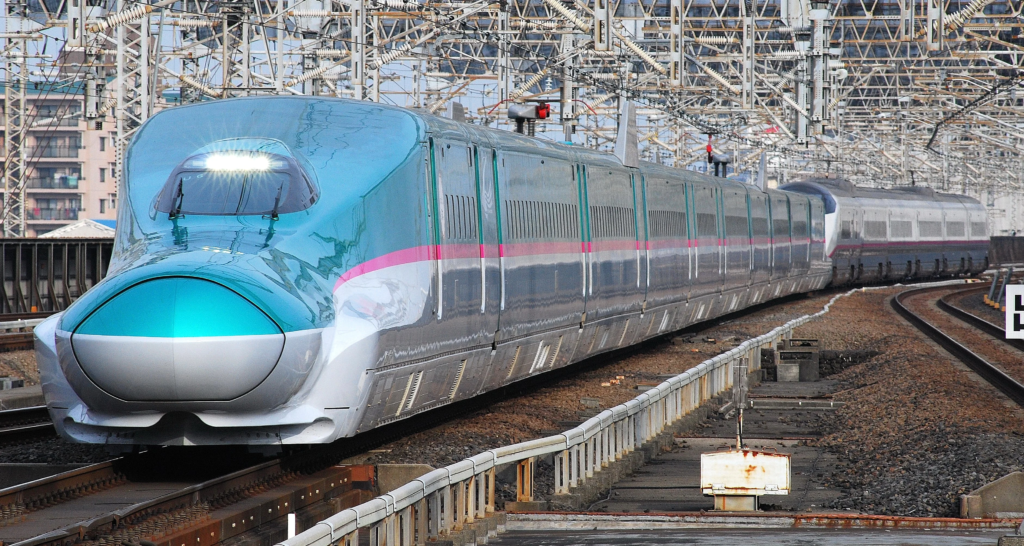Japan Gifts Two Shinkansen Bullet Trains to India
In a significant boost to India’s ambitious high-speed rail project, Japan has announced it will gift two Shinkansen bullet train sets, the E5 and E3 models, to India for testing and inspection on the under-construction Mumbai-Ahmedabad High-Speed Rail (MAHSR) corridor.

The trains, expected to arrive by early 2026, mark a pivotal moment in the deepening technological and diplomatic ties between the two nations.
This gesture not only accelerates India’s bullet train dream but also underscores Japan’s commitment to supporting India’s infrastructure modernization.
Japan’s Generous Gift
Japan’s decision to donate two Shinkansen train sets was reported widely across Indian and international media like The Japan Times, The Times of India, and Free Press Journal detailing the development.
The E5 and E3 series trains, equipped with specialized inspection tools, will be used for trial runs on the 508-km Mumbai-Ahmedabad corridor, a flagship project under India’s National High Speed Rail Corporation Ltd (NHSRCL).
These trains will collect critical operational data under India’s challenging environmental conditions, such as extreme heat and dust, to ensure the corridor’s readiness for commercial operations.
Japan Gifts Two Shinkansen Bullet Trains to India
The gifted trains will serve as training platforms for Indian engineers and railway staff, helping them master Shinkansen technology before the corridor’s partial launch in August 2027.
The E5, operational since 2011, is a modern high-speed train capable of reaching speeds up to 320 km/h, known for its aerodynamic design, quiet ride, and luxurious first-class coaches.
The E3, a slightly older model, is typically used for mini-Shinkansen services. Both trains, made of lightweight aluminum alloy and approximately 253 meters long with 10 coaches, can carry up to 731 passengers.
The donation comes as Japan and India plan to introduce the next-generation E10 Shinkansen series on the MAHSR corridor by the early 2030s, with the E5 and E3 models serving as interim tools to refine the E10’s design for Indian conditions.
Why Japan Gifted the Trains?
Japan’s decision to provide the trains free of charge is rooted in strategic, diplomatic, and economic motivations. The gesture is seen as a “friendly act” to strengthen bilateral ties and support India’s high-speed rail ambitions, according to Zee News.
It aligns with Japan’s broader goal of exporting Shinkansen technology globally while fostering technology localization in India.

The trains will aid in data collection, ensuring the E10 series, expected to debut with a top speed of 400 km/h, is tailored to India’s unique operational needs.
The donation also reflects Japan’s confidence in the Mumbai-Ahmedabad project, which is largely funded by a low-interest loan from the Japan International Cooperation Agency (JICA).
JICA is providing ₹59,396 crore in Official Development Assistance (ODA) loans, with ₹22,627 crore already signed, featuring a 50-year tenure, a 0.1% interest rate, and a 15-year moratorium.
This financial support underscores Japan’s long-term investment in India’s infrastructure growth.
Geopolitically, the move is perceived as a masterstroke in Indo-Japanese diplomacy, with some analysts suggesting it positions Japan as a key partner in India’s modernization efforts, especially as China watches from the sidelines.
The gift enhances Japan’s soft power in South Asia, reinforcing its role as a reliable ally in contrast to other regional players.
Moreover, Japan has a history of sharing Shinkansen technology to build international partnerships.
A similar gesture was made when Japan provided a first-generation Shinkansen train to Taiwan for its high-speed rail network, a precedent that highlights Japan’s tradition of technological collaboration.
A Brief History of India-Japan Relations
India and Japan share a deep and evolving relationship that spans centuries, rooted in cultural exchanges and strengthened by modern strategic partnerships.
Historical ties trace back to the introduction of Buddhism to Japan via India in the 6th century, promoting cultural affinity.

In the 20th century, Japan’s support for Indian nationalist Subhas Chandra Bose during World War II and India’s lenient treatment of Japanese war criminals post-war laid the foundation for mutual respect.
Diplomatic relations were formalized in 1952, followed by Japan’s early economic aid to India, including yen loans in 1958 for development projects.
The relationship gained momentum in the 21st century with the establishment of the India-Japan Strategic and Global Partnership in 2006. High-level visits, such as Prime Minister Narendra Modi’s trips to Japan and former Japanese Prime Minister Shinzo Abe’s visits to India, cemented ties.
The 2014 signing of the Mumbai-Ahmedabad bullet train project agreement during Modi’s visit to Tokyo was a landmark moment, symbolizing technological and economic collaboration.
Today, Japan is one of India’s largest foreign investors, with significant contributions to infrastructure, automotive, and technology sectors.
The bullet train project, alongside initiatives like the India-Japan Act East Forum and cooperation in the Indo-Pacific region, reflects shared strategic interests, including counterbalancing China’s regional influence.
The gifting of the Shinkansen trains is a testament to this “special strategic partnership,” as described by both governments.
Official Statements on the Gift
Japanese officials confirmed the program to The Japan Times, emphasizing its role in data collection and accelerating India’s high-speed rail technology development.
Indian railway officials expressed confidence in integrating the best Japanese bullet trains by 2030, with a source telling The Times of India that the gifted trains would meet passenger expectations and prepare the ground for the E10 series.
Value of the Trains
The exact monetary value of the E5 and E3 Shinkansen train sets was not disclosed in available reports, as the donation is framed as a goodwill gesture.
However, Shinkansen trains are high-value assets, with production costs for a single 10-car train set estimated to range between $30 million and $50 million (approximately ₹250-420 crore), depending on specifications and modifications.
The E5 and E3 models, retrofitted with specialized inspection equipment for Indian conditions, likely fall within this range.
The absence of a loan or purchase agreement makes this a significant cost-saving for India, further sweetened by Japan’s technical support for training and testing.
Broader Implications
The gifting of the Shinkansen trains is more than a technological transfer; it’s a symbol of trust and collaboration.
For India, it accelerates the Mumbai-Ahmedabad corridor’s timeline, with over 60% of construction completed, including 292 km of viaduct, 393 km of pier foundations, and 14 river bridges in Gujarat.
The project, delayed by land acquisition issues and the pandemic, is now gaining momentum, with a partial launch targeted for August 2027.
Read this:
For Japan, the move reinforces its position as a global leader in high-speed rail and a key partner in India’s growth story.
It also paves the way for future collaborations, such as the simultaneous launch of the E10 series in both countries, a historic step in rail inn


 Trump’s 25% Tariff Threat Sparks Major Political Storm in India
Trump’s 25% Tariff Threat Sparks Major Political Storm in India  Trump Declares Massive Trade Deal with Japan, Sets 15% Tariff
Trump Declares Massive Trade Deal with Japan, Sets 15% Tariff  Trump’s $21M USAID Claim for India Elections Never Existed
Trump’s $21M USAID Claim for India Elections Never Existed  Did India Strike Pakistan’s Nuclear Hub Kirana Hills?
Did India Strike Pakistan’s Nuclear Hub Kirana Hills?  What’s Happening in Iran: India Urges Citizens to Exit
What’s Happening in Iran: India Urges Citizens to Exit  Why Did Bangladesh Choose Mangoes for PM Modi?
Why Did Bangladesh Choose Mangoes for PM Modi?